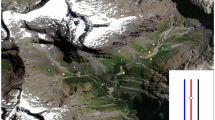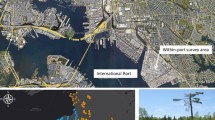Abstract
We attempt to identify the threat to flying beetles imposed by mist nets deployed for bird studies in an area of Mediterranean mosaic of evergreen scrub and deciduous forest in Italy. The present paper is the first attempt to identify the non-target species which die in these artificial traps. A large number of large scarab beetles was entangled in mist nets during a complete ringing session. The seasonal trend of beetle populations and their daily flight activity were also recorded. The results lead us to suggest that the populations of some threatened dung beetles can be impoverished at local level and represent a bycatch of mist net techniques, especially in early spring and at sunrise, when their swarming and reproductive activity is high. When summed with other factors affecting these beetles, such as habitat loss and fragmentation, this tool may represent a threat for vulnerable insect populations. Trapping effects may also represent a depletion of food resource for some insectivorous birds. For these reasons we recommend cooperative research between ornithologists and entomologists to fully study the bycatch effects of mist netting on flying insects and their effects on food availability for insectivorous birds.



Similar content being viewed by others
References
Alerstam T (1990) Bird migration. Cambridge University Press, Cambridge
Barbero E, Palestrini C, Rolando A (1993) Variability of the entomatic diet of Hooded Crow Corvus corone cornix in the Western Po Valley. Avocetta 17:29–33
Bernard E (2001) Vertical stratification of bat communities in primary forests of Central Amazon, Brazil. J Trop Ecol 17:115–126
Bernard E, Fenton MB (2007) Bats in a fragmented landscape: species composition, diversity and habitat interactions in savannas of Santarem, Central Amazonia, Brazil. Biol Conserv 134:332–343
Berthold P (2001) Bird migration: a general survey. Oxford University Press Inc., New York
Blake JG, Loiselle BA (2001) Bird assemblages in second-growth and old-growth forests, Costa Rica: perspectives from mist nets and point counts. Auk 118:304–326
Carpaneto GM, Maltzeff P, Piattella E, Pontuale G (1998) I Coleotteri Lamellicorni della Tenuta Presidenziale di Castelporziano e delle aree limitrofe (Coleoptera, Lamellicornia). Boll Assoc Rom Entomol 52:9–54
Carpaneto GM, Maltzeff P, Piattella E, Facchinelli L (2001) Nuovi reperti di Coleotteri Lamellicorni della Tenuta Presidenziale di Castelporziano e delle aree limitrofe (Coleoptera, Lamellicornia). Boll Assoc Rom Entomol 56:311–329
Carpaneto GM, Mazziotta A, Valerio L (2007) Inferring species decline from collection records: the study case of roller dung beetles in Italy (Coleoptera: Scarabaeidae). Divers Distrib 13:903–919
Carroll SK, Carter TC, Feldhamer GA (2002) Placement of nets for bats: effects on perceived fauna. Southeast Nat 1:193–198
Deslauriers JV, Francis CM (1991) The effect of time of day on mist-net captures of passerines on spring migration. J Field Ornithol 67:107–116
Fayt P, Machmer MM, Steeger G (2005) Regulation of spruce bark beetles by woodpeckers—a literature review. Forest Ecol Manag 206:1–14
Glue DE (1977) Feeding ecology of the short-eared owl in Britain and Ireland. Bird Study 24:70–78
Golawski A (2006) Comparisons of methods for diet analysis and prey preferences: a case study on the Red-backed Shrike Lanius collurio. Ornis Fennica 83:108–116
Gotelli NJ, Entsminger GL (2009) EcoSim: null models software for ecology. Version 7. Acquired Intelligence Inc. and Kesey-Bear. Jericho, VT 05465. http://garyentsminger.com/ecosim.htm
Horgan FG, Berrow SD (2004) Hooded crow foraging from dung pats: implications for the structure of dung beetle assemblages. Biology and environment. Proc R Ir Acad 104b:119–124
Knowlton GF, Telford PE (1947) Insect food of the eastern Sparrow Hawk in Cache Valley, Utah. Auk 64:311
Kristin A (1994) Breeding biology and diet of the bee-eater (Merops apiaster) in Slovakia. Biologia 49:273–292
Legendre P, Legendre L (1998) Numerical ecology. Second English Edition. Elsevier Science BV, Amsterdam
Lindsey AA (1939) Food of the starling in central New York State. Wilson Bull 51:176–182
Lobo JM (2001) Decline of roller dung beetle (Scarabaeinae) populations in the Iberian Peninsula during the 20th century. Biol Conserv 97:43–50
Lobo JM, Lumaret JP, Jay-Robert P (2001) Diversity, distinctiveness and conservation status of the Mediterranean coastal dung beetle assemblage in the Regional Natural Park of the Camargue (France). Divers Distrib 7:257–270
Lukas J, Leuenberger M, Rampazzi F (1996) Capture efficiency of mist nets with comments on their role in the assessment of passerine habitat use. J Field Ornithol 67:263–274
Martikainen P (2000) Flight period and ecology of Trypodendron proximum (Niijima) (Col., Scolytidae) in Finland. J Appl Ecol 124:57–62
Newton I, Davis PE, Davis JE (1982) Ravens and buzzards in relation to sheep-farming and forestry in Wales. J Appl Ecol 19:681–706
Owen DF (1956) The food of nestling jays and magpies. Bird Study 3:257–265
Schmera D, Tóth M, Subchev M, Sredkov I, Szarukán I, Jermy T, Szentesi Á (2004) Importance of visual and chemical cues in the development of an attractant trap for Epicometis (Tropinota) hirta Poda (Coleoptera: Scarabaeidae). Crop Prot 23:939–944
Svestka M, Drapela K (2009) The effect of environmental conditions on the abundance of grubs of the cockchafer (Melolontha hippocastani F.). J For Sci 55:330–338
Thiollay JM (1994) Structure, density and rarity in an Amazonian rain-forest bird community. J Trop Ecol 10:449–481
Tidmarsh R (2003) Nest box contents as an indicator of nestling diet in the European Roller Coracias garrulus. Synthèse des études et travaux de conservation a Rocha France 2003
Trnka A, Szinai P, Hošek V (2006) Daytime activity of reed passerine birds based on mist-netting. Acta Zool Acad Sci Hung 52:417–425
Verdú JR, Galante E (eds) (2006) Libro rojo de los invertebrados de España. Dirección general para la Biodiversidad. Ministerio de Medio Ambiente, Madrid
Village A (1982) The diet of Kestrels in relation to vole abundance. Bird Study 29:129–138
Wilson JD, Morris AJ, Arroyo BE, Clark SC, Bradbury RB (1999) A review of the abundance and diversity of invertebrate and plant foods of granivorous birds in northern Europe in relation to agricultural change. Agr Ecosyst Environ 75:13–30
Acknowledgments
We thank the management authorities of the natural reserve of Castelporziano who authorized the fieldwork (Dr. De Michelis, Ing. L. Tinelli) and the coordinator of the ‘Progetto di Monitoraggio Ambientale della Tenuta Presidenziale di Castelporziano’ (Prof. A. Fanfani). We are also indebted with the warden staff of the Presidential Estate of Castelporziano, in particular Giuseppe Landucci, for their help in the fieldwork. A special thank is for the ornithologists Arianna Aradis and Corrado Battisti who gave a critical reading of the first version of the manuscript.
Author information
Authors and Affiliations
Corresponding author
Rights and permissions
About this article
Cite this article
Carpaneto, G.M., Mazziotta, A. & Maltzeff, P. Are mist nets a menace for threatened insects? A first attempt to gather quantitative data. J Insect Conserv 15, 833–837 (2011). https://doi.org/10.1007/s10841-011-9381-z
Received:
Accepted:
Published:
Issue Date:
DOI: https://doi.org/10.1007/s10841-011-9381-z




